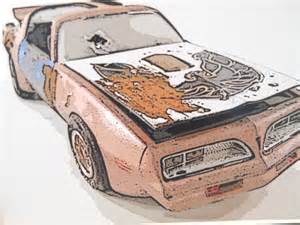by
JOHN SCHERBER
DRIVING IN MEXICO 2: DON’T DRIVE WHILE MARRIED
In a
previous article (Driving in México: No Country for new Cars) I established
that contrary to the superficial impression of many, Mexican traffic operates
by rational and coherent guidelines that are easily understood. Commonly
referred to as “free style” driving, these rules differ somewhat from those in
the U.S. and Canada, much like cow sorting differs from dressage in
horsemanship. Some readers have requested more detail on this concept.
A
proper understanding of road signage in México is an excellent place to begin.
Here we instantly encounter some cultural differences that require a closer
look. The first point of difference is that of etiquette. Displaying
directional signs at the side of the road is considered by many highway
planners to insult the intelligence of the driver, even when he doesn’t have
the slightest clue where he’s going. Second, the México Department of Transportation
has as its motto: If You Don’t Already Know How To Get There, You Have No Damn
Business Trying to Go.
This is
clear enough, and it encourages a healthy, independent–minded outlook on the
part of the driver. No nanny state here, this is a country of hardy survivors
who expect no help and are therefore never disappointed.
Third,
and possibly foremost, you will encounter the language problem. For example:
you see a road sign that advises, No
Maneje Cansado. Evite Accidentes. No problem, since you recall from high
school Spanish 31 years ago that cansado
means married. But wait, there is the idiom to consider. This obviously doesn’t
literally mean Don’t Drive While Married. Avoid Accidents. You think for a
moment: aha! Unmarried equals single, so it must translate as Form Single Lane!
This is not going to be as hard as it looks.
Unfortunately,
you have mistaken cansado for casado, and the first line of the sign
means Don’t Drive While Tired.
Perhaps
driving in a single lane has something to do with animals you might encounter
on the highway. You see them first as a herd of longhorn cattle at the edge of
the blacktop two hundred feet down the road. Prudently, you slow down a bit.
But why is the cowherd sitting on a rock on your immediate right, grilling nopales (cactus paddles), not even
glancing in the direction of his herd? Fortunately they are showing no
inclination to move onto the pavement, where there are only paper-thin sheets
of road kill to eat anyway.
You are
slowly easing abreast of them, when the possibility that something edible is clinging
to the surface of a three-month-old maroon BMW is too much for them to ignore. Is
it only the alpine meadow smell of Bavaria? Soon you are surrounded with
creatures that have very big wet lips and dangling tongues that could remove
the seal coat from your finish with a single exploratory lick. These are
tongues that could sweep the spines from cactus without a second thought.
Your
hand leaps to close your window, but it’s too late. As the lead cow presses its
face to yours and rests its horns on the sunroof, it must have been the fertile
overtones of its breath that made you lean on the horn. As they scatter, your
foot finds the gas pedal and spins you onto the opposite shoulder, narrowly
missing a pair of overripe hindquarters about to add another element to this complex
mix. As you streak up the highway, the tachometer seems to be measuring the
rhythm of your heart.
Of
course, on the other end of the spectrum, México is the home of the $80 car.
But having a modest purchase price is no excuse for having a modest sound
system. It is not uncommon to find yourself at the wheel of your immaculate
5-series BMW behind a 30-year-old rust bucket that spent the most productive
years of its life sliding sideways through the winters of Escanaba, Michigan. Vibrating
even the pavement beneath your tires, the car’s throbbing subwoofer feels as if
it’s also dissolving the nuclei right out of your brain cells.
Naturally,
this was never the intent. You must never think of approaching the driver to
complain, because his hearing was gone within hours of installing this system.
Furthermore, the secondary purpose of it is to gradually work loose the
accumulated rust from within his wheel wells. This accounts for the crunching
sound under your crisp new Michelins as you follow him through traffic.
Roadside
chats among friends who pull over when they meet behind the wheel are unknown
in México. All chats take place proudly in the middle of the street, especially
when there is an opportunity to block both lanes. This is regarded as an
occasion to demonstrate your social skills, your connectedness in the
community, and your personal clout. For many, it’s a substitute for LinkedIn
and Facebook. In this context, mere Tweets are unheard of. In México you cannot
even say hello in as few as 140 characters.
This
country is the land of small-scale entrepreneurs running companies without
capital. Road services constitute a major example. Suppose you have come to a
halt in the supermarket parking lot. Naturally you’ve angled the BMW across two
spaces to protect it from dings. This brings a few dirty looks, but only from
other gringos. The Mexicans correctly understand this to be free style parking,
a logical offshoot of free style driving.
Immediately
a young man rushes up with two buckets of fluid, offering to wash your car. A
damp rag hangs over his shoulder. A word of caution is in order. This is his
total water supply for the day. It is late afternoon and neither of the buckets
looks especially inviting. The more opaque of the two contains not only a murky
solution of road grime and aggregated diesel exhaust, but a volume of dissolved
bird droppings equivalent to what you could extract from the bottom of a
hundred Costa Rican parrot cages.
The
bucket of “clean” water for rinsing is sufficiently polluted to deposit a milky
glaze on your car that as it dries would bake like nacre in the sun. You are
not remotely tempted, since you had never considered an opalescent finish for
this car to begin with.
You
graciously decline the boy’s offer and slip him fifty pesos to guard the car
while you’re inside. It’s worth it: he would’ve washed it for twenty.
TWITTER:
@MEXTEXT




No comments:
Post a Comment